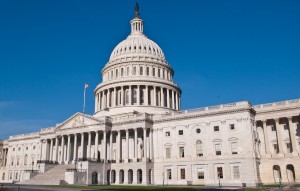January 22, 2014
Congress Passes, President Signs FY2014 Appropriations
Posted by Nick Saab
Written by Nick Saab, AGU Public Affairs
Last week, Washington rejoiced as Congress passed and the president signed a bill that funds the entire Federal government through September 30, 2014. The $1.1 trillion dollar bill, known as an “omnibus” in that it is a collection of multiple spending bills wrapped into one, provides a welcome respite from the budget battles that have jammed the congressional pipeline for the past two years. As there is with every bill whose magnitude and scope is so far-reaching, there are winners and losers.
The scientific community, whole not necessarily rejoicing, gave a metaphoric sigh of relief. Many programs that had seen cuts brought on by the across-the-board cuts from last year (i.e. the “sequester”) were given a little breathing room, with some funding brought above pre-sequestration amounts. NASA’s Planetary Science division, which covers missions like the Mars Curiosity rover and the Rosetta spacecraft, saw an increase of $127 million above the President’s FY2014 budget request and $153 million above FY13 post-sequester numbers. The National Science Foundation received a significant boost as well with an increase of $288 million above post-sequester FY13 numbers and $139 million above FY12.
For other agencies, the changes were much less dramatic. The Environmental Protection Agency received $239 million (a 2.6 percent increase), more than it did in 2013, yet saw a decrease of $249 million when compared with the higher, pre-sequester numbers appropriated in 2012. It was the same story with the United States Geological Survey; a $19 million dollar (1.8 percent) increase over FY13 yet a $36 million (3.5 percent) reduction with regards to FY12.
The even more sobering reality is that once the numbers are viewed in light of economic inflation, the picture looks either “not as great as you thought” or “worse than you’d hoped.” The Bureau of Labor Statistics calculated the rate of inflation at 1.5 and 2.1 percent for 2013 and 2012 respectively. That means, for instance, that the United States Geological Survey really saw a .3 percent gain from FY13 and 7.1 percent reduction from FY12.
Even though the picture isn’t as rosy as many in the scientific community had hoped, it is at least a shift from the downward budgetary trend that has sent many researchers either looking for work outside their field or leaving the United States for greener pastures. The House and Senate, in coming up with their approach to long-term funding of the Federal government, have shown what is possible when both sides work together. Nevertheless, a healthy dose of cautious optimism is required, as many areas of the Earth and space sciences remain severely underfunded. While we may have just begun digging ourselves out of the hole we created, there is still a long way to go.








